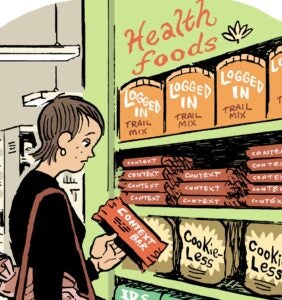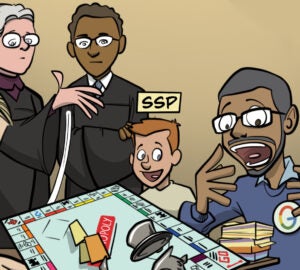 “Data-Driven Thinking” is written by members of the media community and contains fresh ideas on the digital revolution in media.
“Data-Driven Thinking” is written by members of the media community and contains fresh ideas on the digital revolution in media.
Today’s column is written by Chris O’Hara, co-founder and chief revenue officer at Bionic Advertising Systems.
Back in 2007, a company called TRAFFIQ started one of the first programmatic futures exchanges. The idea was simple. Publishers committed blocks of premium inventory into the exchange at a stated price. Advertisers could construct packages of premium inventory at discounted prices by making future commitments. Basically, it was a better, faster way to buy digital guaranteed.
The idea never really took off. Publishers didn’t understand how to value their inventory in the future. Real-time enablement was just starting to take off, and advertisers and their agencies were deeply stuck in manual inventory procurement run by spreadsheets and fax machines. TRAFFIQ went on to build some highly innovative workflow automation software and is now a successful technology-enabled digital agency.
Could programmatic futures thrive nearly eight years later in our fully programmatic world? Today’s “programmatic” is still very focused on RTB, inventory pools are still murky and technology’s ability to value publisher inventory still has a long way to go. What’s missing?
Unequal Exchanges
The problem with today’s programmatic RTB environment is that the “exchanges” aren’t really true exchanges like we have in the financial markets. Although you can liken online inventory to stocks, the comparison is tough to justify. Lacking agreed measurement, value continues to be in the eye of the beholder. More importantly, the procurement process is still driven more by the buyers than the sellers. Private exchanges are starting to make inroads in terms of creating valid counterparty transactions, but the RTB pipes have not been engineered to handle the key aspects of transactional workflow.
The biggest fundamental problem with RTB is that it values inventory in a singular way. In the open market, a 30-year-old male car intender costs the same whether you find him on Cars.com or Hotmail. Although tweaks in RTB with private transactions can enable premium inventory procurement, it’s not scalable. The right exchange should be able to value audience separately from everything else.
Another issue is the problem of valuing inventory over time. A publisher with 30 days to go in the quarter may have a home page inventory worth $10 cost per mille (CPM). But, the day before the quarter closes, that same inventory may be worth only $1 CPM if it hasn’t been sold yet. Today’s networks and exchanges enable publishers to set a solid floor price, but have trouble managing value dynamically. That’s because future publisher pricing is not being matched with visible demand.
Ironically, the real-time nature of today’s exchanges actually limits a publisher’s ability to manage yield because every impression always chases an immediate bid. A real futures exchange would enable publishers to value inventory dynamically, so it matches the value set by buy orders in the system – real, stated demand for future inventory – and not by bids.
The Promise Of Programmatic Futures
Although the demand side has it pretty good right now, a true programmatic futures exchange could be truly game-changing. Yes, today’s exchanges are serious arbitrage machines. Because buyers have access to the entire market, they have more information available to them to manage their investment. The problem is, in programmatic RTB, they are stuck with a two-tiered system. They can either secure “premium” inventory through private exchanges and/or deal ID functionality for branding and demand creation, or they can drive lower-funnel activity through performance-driven bidded buying in the wilds of the exchange.
Ask any trading desk manager and they’ll tell you that it’s still really hard to get exactly what you want without going to guaranteed buys. Cross-channel buying still requires multiple systems, and communicating the value of the “media investments” to clients is near impossible because everything is bought and measured differently. Going from “media buying” to true “media investment” necessitates a true programmatic future exchange, akin to NASDAQ.
In such an exchange, publishers could value their inventory by using a combination of their existing rate cards and product catalogs for selling advance contracts, along with data from buy orders in the market itself. Just like in the stock market, prices would fluctuate based on the spread between bid, ask pricing and the contract date. Publishers could therefore execute any type of guaranteed buy in such a system (direct sales) as well as have the exchange handle direct deals (programmatic direct and private market). This is because such an exchange would manage matchmaking, not the execution piece.
This is critical. Today, we are watching systems built from the ground up to deliver ads try and go in reverse to manage the process of buying them. As we have seen, the rise of automated guaranteed platforms suggests that RTB is not quite cut out for the job.
Why would the demand side want a true programmatic futures exchange? First of all, a true futures exchange treats media as a true commodity and makes it tradable. The beauty of a commodities exchange is that once you own a future contract for pork bellies, you can sell it. In digital media, once you buy a bunch of 300x250s in AppNexus, you are stuck with them.
Arbitrage is not the same as futures trading in a regulated market. A true programmatic futures exchange for media would actually enable well-heeled buyers to leverage their scale to consolidate positions in media and resell them in bulk or chunks. Think about that. Imagine GroupM buying the entire fourth-quarter consumer electronics inventory in February. What would that be worth to another agency representing Sony as the holidays approached?
The bottom line is that despite the power of RTB pipes, we are a long way from seeing the platforms where addressable media will be traded in the future. Eight years ago, my bet was on a programmatic futures exchange. I am still long.
Follow Chris O’Hara (@chrisohara) and AdExchanger (@adexchanger) on Twitter.














